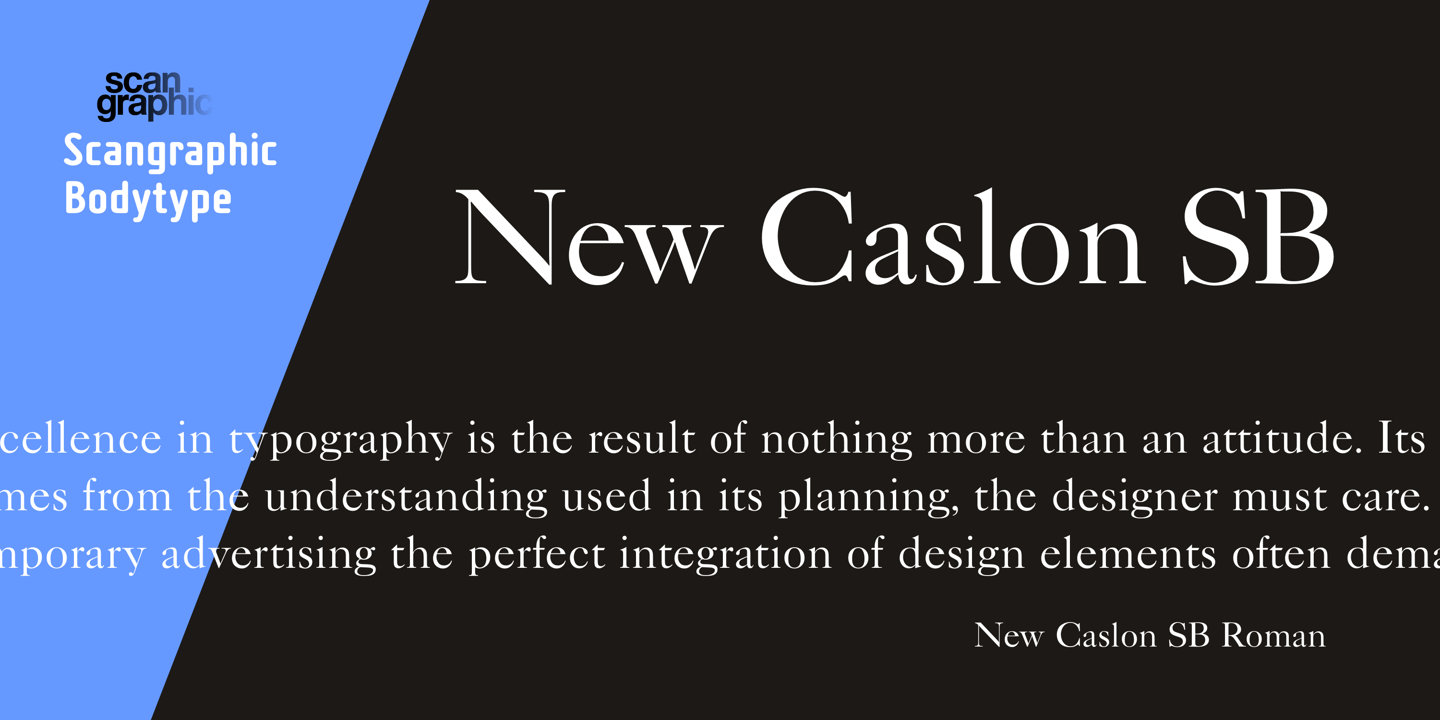

Some of the types shown were not cut by Caslon, most notably the French Canon roman (probably cut by Joseph Moxon). William Caslon's specimen sheet (dated 1734 but actually issued from 1738 onwards). William Berkson, designer of a revival of Caslon, describes Caslon in body text as "comfortable and inviting". Modern Caslon revivals also often add features such as a matching boldface and "lining" numbers at the height of capital letters, neither of which were used in Caslon's time. Many revivals exist, with varying faithfulness to Caslon's original design. Caslon's larger-size roman fonts have two serifs on the "C", while his smaller-size versions have one half-arrow serif only at top right.Ĭaslon's typefaces were popular in his lifetime and beyond, and after a brief period of eclipse in the early nineteenth century returned to popularity, particularly for setting printed body text and books. However, Caslon created different designs of letters at different sizes: his larger sizes follow the lead of a type he sold cut in the previous century by Joseph Moxon, with more fine detail and sharper contrast in stroke weight, in the " Dutch taste" style. The italic "J" has a crossbar, and a rotated casting was used by Caslon in many sizes on his specimens to form the pound sign. The "Q", "T", "v", "w" and "z" all have flourishes or swashes in the original design, something not all revivals follow. In italic, Caslon's "h" folds inwards and the "A" is sharply slanted. Ascenders and descenders are relatively short and the level of stroke contrast is modest in body text sizes. The "W" has three terminals at the top and the "b" has a small tapered stroke ending at bottom left. The letterforms of Caslon's roman, or upright type include an "A" with a concave hollow at top left and a "G" without a downwards-pointing spur at bottom right. His typefaces established a strong reputation for their quality and their attractive appearance, suitable for extended passages of text. Caslon established a tradition of engraving type in London, which previously had not been common, and was influenced by the imported Dutch Baroque typefaces that were popular in England at the time. He worked in the tradition of what is now called old-style serif letter design, that produced letters with a relatively organic structure resembling handwriting with a pen. CaslonĬaslon is the name given to serif typefaces designed by William Caslon I (c. 1692–1766) in London, or inspired by his work.Ĭaslon worked as an engraver of punches, the masters used to stamp the moulds or matrices used to cast metal type. For other uses, see Caslon (disambiguation). Luin kept his design true to the original and Caslon Classico consists of two cuts with corresponding italic and small caps characters.This article is about the typeface. Caslon Classico appeared in 1993 and was designed by Franco Luin, the designer of various interpretations of classic typefaces. Next to Baskerville, Caslon is known as the embodiment of the English Baroque-Antiqua and has gone through numerous new interpretations, meaning that every Caslon is slightly different. The overall impression which Caslon makes is serious, elegant and linear.

The serifs are finer and the axis of the curvature is almost or completely vertical. The characteristics of the earlier Renaissance typefaces are only barely detectable. The Caslon font was long known as the script of kings, although on the other side of the political spectrum, the Americans used it as well for their Declaration of Independence. His major influences were the Dutch designers Christoffel van Dijcks and Dirck Voskens. The Englishman William Caslon (1672-1766) first cut his typeface Caslon in 1725. For the German lower-case diacritical marks, all Headline Types complements contain alternative integrated accents which allow the compact setting of lower-case headlines. For a number of Bodytypes, hairlines and serifs were thickened or the whole typeface was adjusted to meet the optical requirements for setting type in small sizes. For the Bodytypes, fine spaces were created which prevented the smear effect on acute angles in small typesizes. In addition to the adjustment of spacing, there are also adjustments in the design. The kerning tables, as well, have been individualized for each of these type varieties. That of the Headline Types is decidedly more narrow in order to do justice to the requirements of headline typesetting. That of the Bodytypes is adjusted for readability.

The most obvious differentiation can be found in the spacing. One is designed specifically for headline typesetting (SH: Scangraphic Headline Types) and one specifically for text typesetting (SB Scangraphic Bodytypes). Since the release of these fonts most typefaces in the Scangraphic Type Collection appear in two versions.


 0 kommentar(er)
0 kommentar(er)
